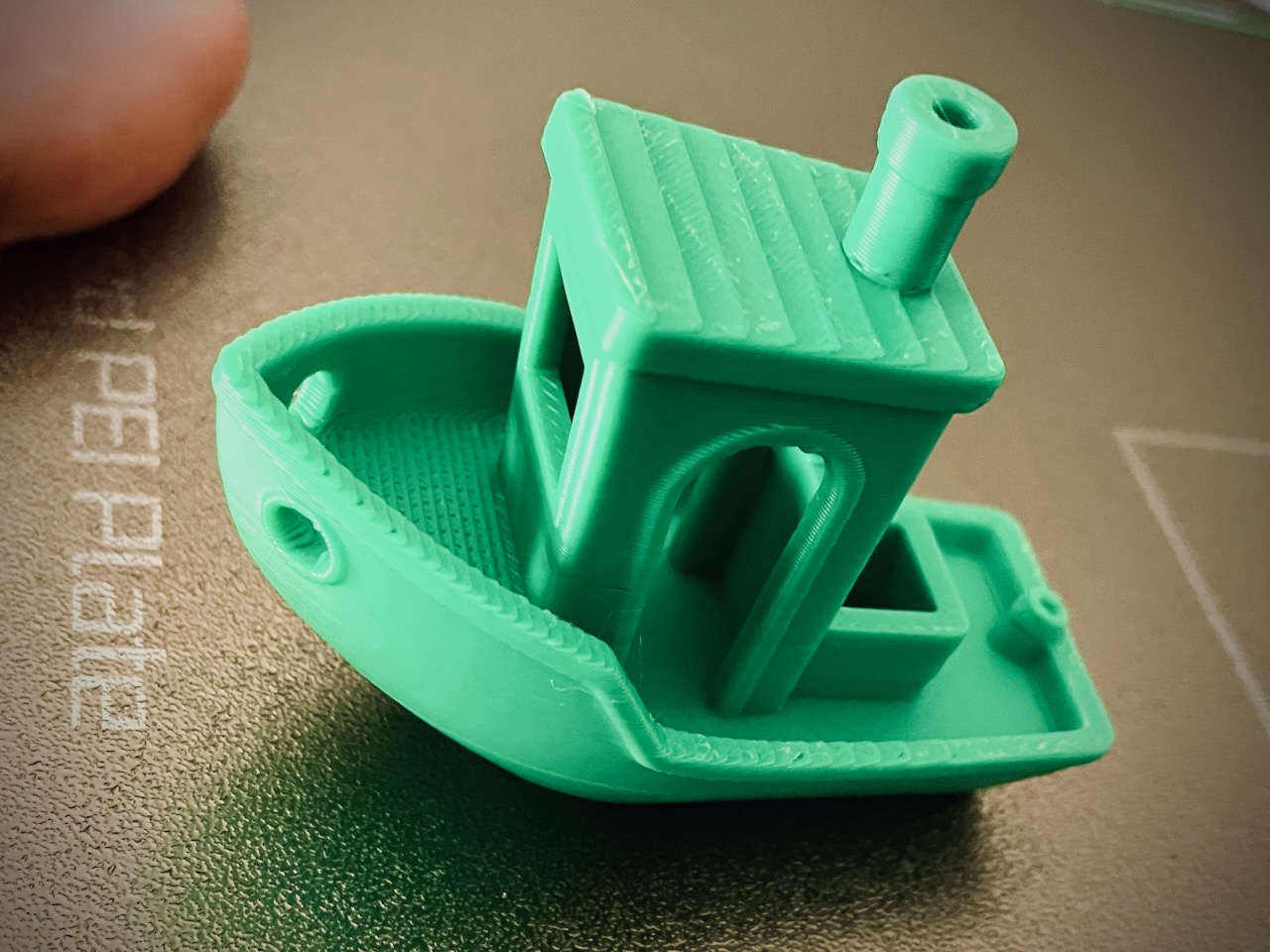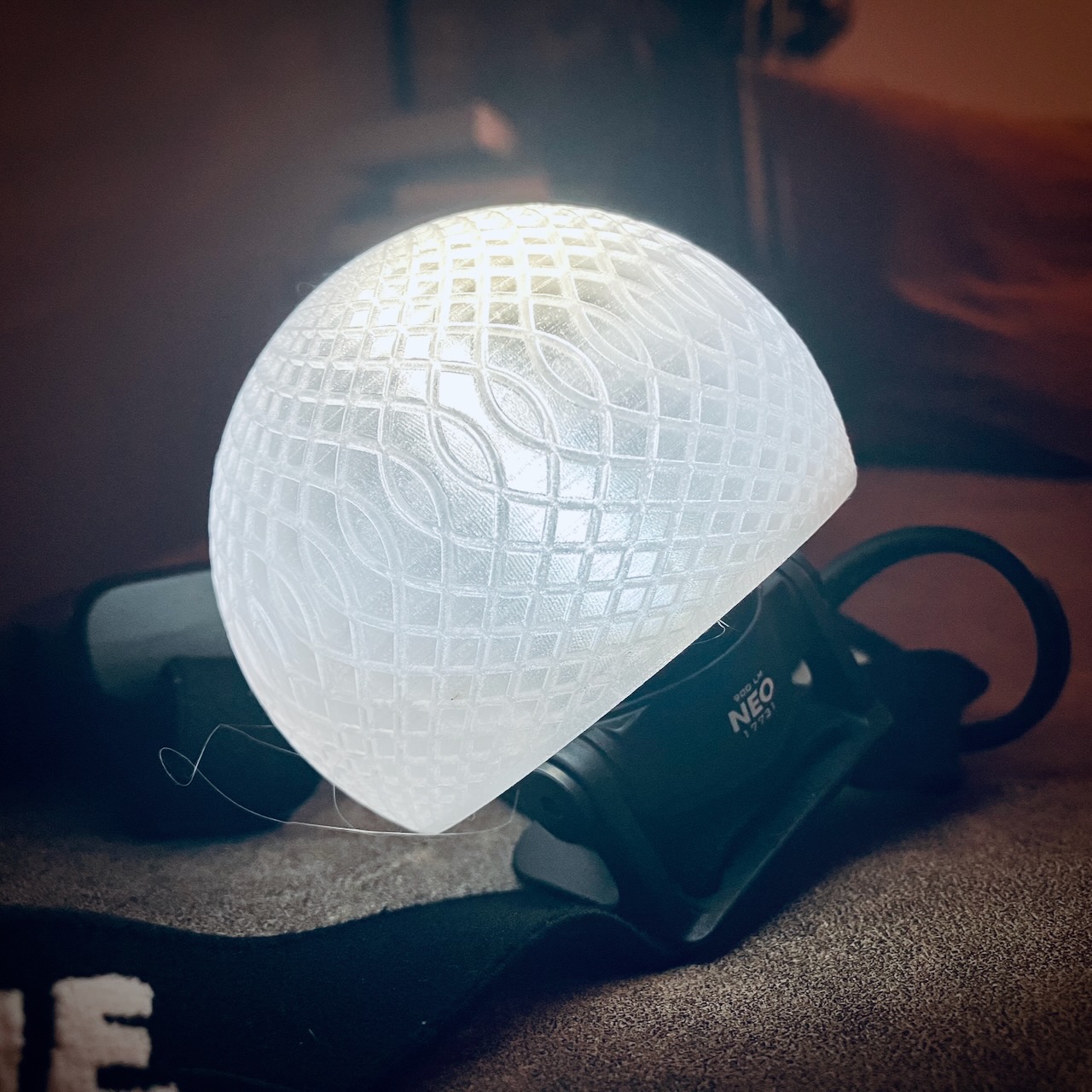BambuLab X1C Filament Notes
/ 3 min read
Table of Contents
So I got a BambuLab X1C. I’m a 3d printing rookie so I started with some readymade files and the standard materials the printer came with, then went on to experiment a bit more with other stuff I ordered. This post is basically my notes-to-self about different filament types so I can come back to it once I forget again what one of the abbreviations is about.
Here’s a pic after unboxing and printing some first stuff like the scraper:

Bambu filaments come with an embedded RFID chip that communicates material type, color, and remaining length to the printer. The printer automatically adjusts temperature, cooling, and other settings when it detects what’s loaded. Nice for a beginner like me, though it makes the materials a bit more expensive of course.
Common Filament Types
PLA Basic (Polylactic Acid)
PLA (190-220°C) is supposed to be easy to work with. It’s biodegradable, doesn’t warp much, and Bambu’s basic PLA has no adhesion issues with minimal stringing. The downside? It’s not great for anything that needs to withstand heat or mechanical stress. Here’ the obligatory 3d “Hello, World!” benchy I printed:

ABS (Acrylonitrile Butadiene Styrene)
For more functional parts, ABS (220-250°C) provides better heat resistance and durability. It’s the same plastic used in LEGO bricks. ABS printing needs proper ventilation, the material releases fumes that can be harmful! I don’t have any ABS filaments yet. The more I read about filament in general, looks like ventilation is crucial regardless of the material you’re using. There’s also ABS-GF (glass fiber-reinforced!)
PETG HF (Polyethylene Terephthalate Glycol)
PETG (230-250°C) seems like a good middle ground - offering ABS-like strength with PLA-like printability. It’s food-safe, has great layer adhesion, and works well for containers and mechanical parts.
I did a test with Bambu’s PETG Translucent filaments. These allow light to pass through! It’s quite slow to print those!

TPU (Thermoplastic Polyurethane)
The TPU (flexible filament, 220-230°C) options look interesting. It’s soft! Wonder if it’s tricky to print.
More!
There’s also some specialty filaments like their PLA Carbon Fiber and PLA Matte variants. The carbon fiber blend adds rigidity while maintaining PLA’s ease of printing, while the matte finish eliminates shiny surfaces for a more professional look.
I’ve had a frustrating experience with Bambu’s PLA Matte White. Despite the X1C’s supposed plug-and-play simplicity, this particular filament has been nothing but trouble so far. My prints keep failing with spaghetti. Interestingly, the PLA Matte Blue works flawlessly on the exact same settings. After checking Reddit, it seems I’m not alone.
The support material they provide works with their multi-material system.